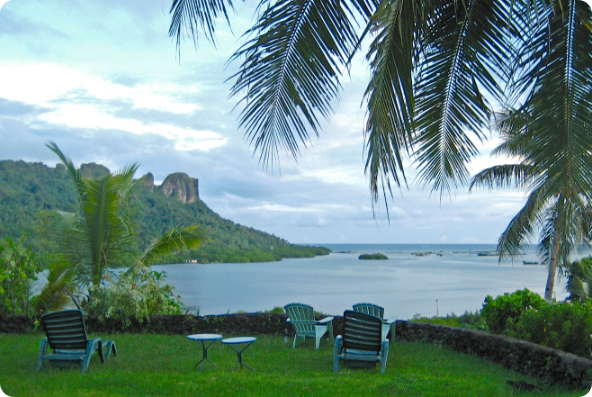
Pohnpei is one of the four states in the Federated States of Micronesia, which is an independent republic in free association with the United States. Pohnpei State includes the main island of Pohnpei and the outer islands of And, Pakin, Sapwuahfik, Mwoakilloa, Pingelap, Nukuoro, Kapingamarangi, Oroluk, and Minto Reef (uninhabited). Less than 4% of the state’s population lives in the outer islands; however, these islands have cultures and languages that differ from the main island of Pohnpei. [1]
Official / Indigenous languages
Mahsen en Pohnpei (Pohnpeian), Leelee Kilinis (Kapingamarangi), Basa de henua (Nukuoro), Lokaiahn Sapwuahfik (Sapwuahfikese), Lal in Mwoakilloa (Mokilese), Lokaiahn Pingelap (Pingelapese)
* note: Kapasen Mwoshulók (Mortlockese) is spoken by a large community in Pohnpei. English is also widely spoken by all.
Population
36,196 (2010) [1]
Number of schools
40 schools in SY19-20
33 elementary, 5 high schools, 2 multi-grade [3]
Number of students
9,997 in SY19-20 [4]
Number of teachers
624 teachers in SY19-20 [4]
Teacher credentials
64% qualified; 25% certified in SY19-20
3% with high school diplomas
74% with associate’s degrees
21% with bachelor’s degrees
2% with advanced degrees
Institutes of higher education
College of Micronesia main campus offers a bachelor’s degree in education, as well as associate degrees and certificates in health careers, liberal arts, teacher preparation, technology, nursing, marine science, business, agriculture, criminal justice, culture, and trades.
For more information about the FSM National Department of Education
- Standards-based assessment scores, teacher/student demographic data, and fiscal accountability: https://www.national.doe.fm/stats/indicators-2020/
- Content standards and benchmarks: http://national.doe.fm/index.php/ndoe-public/education-documents/education-curriculum-and-slo
[2] https://www.fsmstatistics.fm/social/population-statistics/
[3] http://national.doe.fm/index.php/ndoe-public/education-statistics/education-digest/530-education-digest-2018
[4] http://national.doe.fm/index.php/about-ndoe/ndoe-facsso/facsso-reports